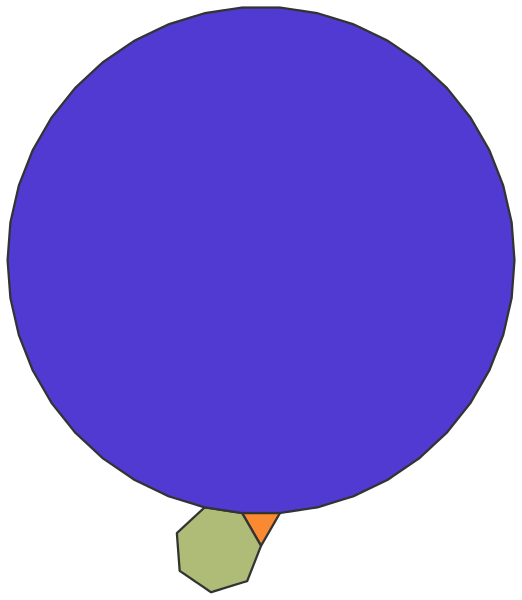This article was published in Scientific American’s former blog network and reflects the views of the author, not necessarily those of Scientific American
There was only one catch and that was Catch-22, which specified that a concern for one's own safety in the face of dangers that were real and immediate was the process of a rational mind. Orr was crazy and could be grounded. All he had to do was ask; and as soon as he did, he would no longer be crazy and would have to fly more missions....
Yossarian saw it clearly in all its spinning reasonableness. There was an elliptical precision about its perfect pairs of parts that was graceful and shocking, like good modern art,...
— Joseph Heller, in Catch-22.
I just finished Catch-22. My edition of the book includes an essay by Jonathan R. Eller called "The Story of Catch-22." In it, I learned that Catch-22's original title was Catch-18. But shortly before it was published, bestselling author Leon Uris published a novel called Mila 18. Heller and his agent Robert Gottlieb didn't want people to think Catch-18 was somehow connected to Mila 18, so they decided to change the number in Heller's title. They tried out 11 and 14, but they weren't happy with either one.
"After a halfhearted attempt at accepting Catch-14, Gottlieb had a late-night flash of conviction," writes Eller. He quotes Gottlieb: "22, it's 22! And I remember calling up Joe and saying, 'It's funnier than 18!' But of course the fact is that no number is funnier than any other number, it's complete self-delusion. But once we were convinced it was funnier, then it became funny."
On supporting science journalism
If you're enjoying this article, consider supporting our award-winning journalism by subscribing. By purchasing a subscription you are helping to ensure the future of impactful stories about the discoveries and ideas shaping our world today.
I haven't decided whether I agree with Gottlieb that no number is funnier than any other number. I have definitely giggled at the mention of the numbers 69 and 37 (if you've seen Clerks, you'll understand). The number 13 amused me last week when I discovered that not only did my hotel omit the 13th floor (more accurately, they labeled the 13th floor "14"), it didn't even have room numbers ending in 13. The triskaidekaphobia is strong there. I find 91 funny because it's not prime but I think it should be, and as a Douglas Adams fan, I'm always happy when I have order number "42" at a restaurant.

A triangle, heptagon, and 42-sided polygon meet at a vertex. Image: Dllu, via Wikimedia Commons.
The "oo" sound in googol (a 1 followed by 100 zeroes) and googolplex (a 1 followed by a googol zeroes) make them sound funny to me. I guess that's not surprising, given that the term "googol" was coined by a nine-year-old. I also find the word "dozen" funny because I think it's weird that we have two words for twelve even though we mostly use a base 10 number system.
Of course, numbers don't have to be integers. I think Champernowne's constant 0.12345678910111213… is pretty funny. It's the kind of number a child might come up with, but it has the important property that each digit and string of digits appears with exactly the frequency you'd expect if the digits were selected at random. This property, called "normality," comes up every once in a while when people talk about whether the digits of pi are random. Normal numbers are funny to me because the vast majority of real numbers are normal, but it's awfully hard to prove that any given real number is. And the integers and rational numbers—the easiest real numbers to think about—aren't normal.
Now let's make an irrational number in a kind of recursive process by starting with the perfectly innocuous number 0.1. That number has one one. So we add "11" to the end of the number: 0.111. Now we have three ones: 0.11131. Now we have four ones and one three: 0.111314113. Continuing this process, we have: 0.111314113612314, and so on. Now that's a funny number! We can get this number by taking all the entries in the integer sequence A060857 and smushing them together behind a decimal point. (Yes, there is an Online Encyclopedia of Integer Sequences, and every sequence has its own number. The good folks at the Aperiodical write reviews of some of these sequences. That's pretty funny.) We can also make similar numbers by starting with different sequences at the beginning. We could start with 0.11 and get 0.11213112512213…, and so on. I think numbers formed like this have a name, but I can't remember it.
Twenty-two doesn't make my list of funny numbers, but Catch-Champernowne's Constant really doesn't have the same ring, and some think that 22 seems to fit into the themes in the book. In his essay, Eller writes, "Both Heller and Gottlieb soon realized just how well the new title represented the structure of events in the novel—the soldier who saw everything twice, Yossarian's disastrous second target pass during the Bologna mission, and the chaplain's deja vu are key examples of the novel's doubling structure. But all this came later—as Gottlieb observes, 'We were just desperate publishers looking for a title.'" If we were reading Catch-14 or Catch-11, perhaps we'd see motifs in the book that made 14 or 11 seem funnier or more appropriate.
What do you think is the funniest number?